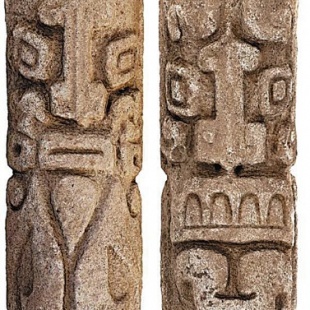What lies beneath


And the discovery of 20 mouth harps, the earliest known evidence in the world, from Huangchengtai also broadens people's knowledge of music. "The mouth harps also offer an important clue to study human migration and cultural exchange in early history," Sun says.
Put into a bigger picture of communications, Shimao looks like a seat of power with a wide influence. But many mysteries still remain.
More and more clues, including comparative studies of relics and DNA analysis, have shown the close links between Shimao and the roughly contemporaneous Taosi site in nearby Shanxi province. Were they allies or enemies?
Some ceremonial jade artifacts from Liangzhu Culture were found in the walls of Shimao. Centered in present-day Hangzhou, Zhejiang province, which is more than 1,600 kilometers away, Liangzhu Culture existed approximately 5,300 to 4,300 years ago. How communication spanned such long distances needs further research.
"The Shimao city ruins offer rich references for our studies on formation and development of early Chinese civilization," Sun says. "We can thus better understand its diverse origins."
In the ongoing national-level comprehensive research program to trace the origins of Chinese civilization, Shimao was listed as one of the core sites.
Wang Wei, a researcher at the Chinese Academy of Social Sciences' Academic Division of History and a leading expert of the program, believes studies on sites such as Shimao helped form a more scientific system to evaluate a civilization.
Among Western scholars, the appearance of metallurgy and written characters were long considered to be indispensable elements to define a civilization. "But the criteria are largely based on recent centuries' research on Mesopotamia and ancient Egyptian civilizations, and are not ubiquitous," he says.
In Wang's opinion, based on recent archaeological studies in China, key indicators defining a civilization can be wider. Social structures, for instance, would play a part with a clear-cut division of classes, usually marked by a ritual system.
"Apparently, the supersized Shimao ruins make the northern Shaanxi province a focal area to study how civilization developed," Wang says.





































